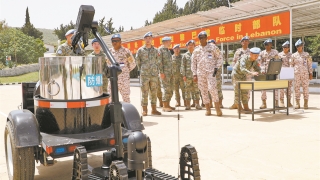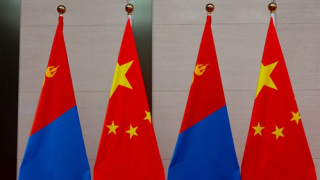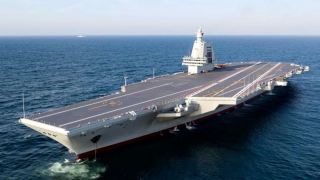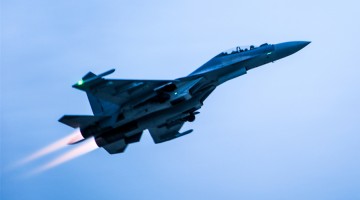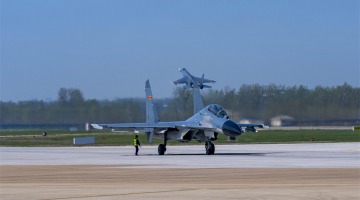By Xiang Haoyu
Japanese Prime Minister Fumio Kishida signed a new security agreement with the Australian Prime Minister Albanese during his recent visit to Australia. The new agreement allowed personnel of both countries to go to the other for joint training in addition to strengthening cooperation in such areas as military, intelligence, cyberspace, outer space, and law enforcement.
It's worth noting that the heating up of Japan-Australia security ties is not an individual case. Considering the series of military and security activities recently held by the US and Japan in the Asia Pacific, a new "Five Eyes alliance" led by the US seems to be in the making.
The US and Japan will hold their biennial joint exercise, the largest-scale real-combat training dubbed Keen Sword, in waters around Okinawa from November 10. In addition to 26,000 Japanese troops and 10,000 US troops, the exercise will involve tens of ships and hundreds of military planes from the two countries. What's conspicuous is that Britain, Australia and Canada will also assign ships and aircraft to the exercise.
Those three countries have had close military and security interactions with Japan recently. Britain and Japan signed the Reciprocal Access Agreement in May and elevated their relationship to a "quasi alliance". Canada and Japan agreed to start negotiations on the General Security of Information Agreement, a pact aimed at sharing military intelligence, during the Canadian foreign minister's visit to Japan in mid-October.
There are many signs that the traditional Five Eyes alliance formed in the background of the Cold War based on religious beliefs and values will probably be replaced by a new version characterized by the mindset of the geopolitical game and major-country competition.
In recent years, as the US has shifted its global strategic pivot to the Indo-Pacific and viewed China as its arch-strategic rival, coping with major-country competition has gradually become an important function of the Five Eyes alliance, whose scope of coordination and cooperation has expanded from intelligence sharing to 5G, cyber-security, and topics related with Xinjiang and Hong Kong. Such a shift has made America better at international mobilization, but also increasingly exposed the inherent limitation of the "Five Eyes" alliance. In this case, two voices have appeared within the US and the UK. One is that Japan should be accepted to form a Six Eyes alliance; the other is that New Zealand, given its limited international influence and half-heartedness in curbing China, has encumbered the alliance in its joint anti-China efforts.
Japan has been longing to become a Five Eyes member for a long time. The ruling Liberal Democratic Party (LDP) made it clear in the Economic and Security Strategy issued at the end of 2020 that the country should join the alliance. But despite its strong political will, Japan faces many technical barriers on its way to the alliance, including that the Japanese Constitution restricts the government from obtaining intelligence and information on its citizens, and the country has shortcomings in the domestic intelligence system and intelligence collection capability. This, combined with the public opposition at home, dims the prospect of Japan joining the Five Eyes alliance anytime soon.
But whether the Five Eyes will take on a new outlook as a multilateral alliance, the military and security interactions among the US, Japan, UK, Australia, and Canada in the Asia Pacific marked a "re-rally" of America's core allies under its "Indo-Pacific" baton, with geostrategic impacts not to be neglected.
We must see that America is reshaping its Indo-Pacific security alliance at a faster pace, and the Biden administration is working hard to bring together the Asian-Pacific alliance and the cross-Atlantic alliance in the region. It is possible that the new Five Eyes, comprising Washington, Tokyo, London, Canberra and Ottawa, will play a central part in the Indo-Pacific strategy.
We must also note that the foundation for the five countries' security cooperation is by no means solid. Both the enhanced US-Japan military ties and the deepened Japan-Australia security cooperation have the strategic intention – which they make no secret of – of jointly combating China. Yet this kind of small-clique cooperation following the logic of major-country competition and highlighting military confrontation is against the common wish of regional countries for peace and cooperation, and the different demands of the members render their ties fragile from the very beginning, let alone that the five countries are not on the same page regarding their interests in China. As their cooperation goes deeper, such divergences are sure to become more conspicuous and irreconcilable.
(The author is a special researcher at the Department for Asia-Pacific Studies, China Institute of International Studies)
Editor's note: Originally published on the huanqiu.com, this article is translated from Chinese into English and edited by the China Military Online. The information and opinions in this article do not necessarily reflect the views of eng.chinamil.com.cn.

